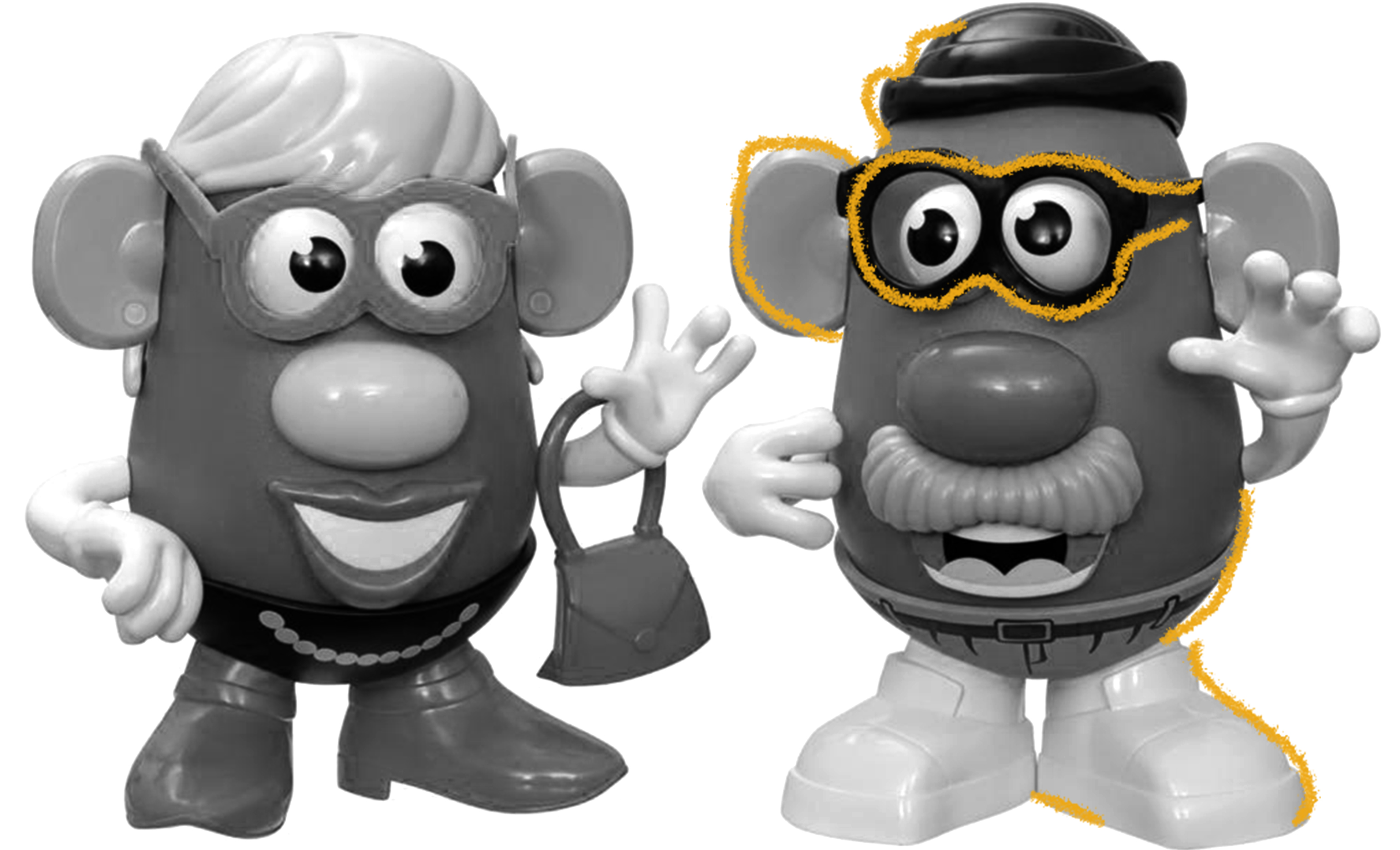Mr. Potato Head was invented by George Lerner in 1949. While there were some similar toys on the market at the time, Lerner’s version was unique in that it used three-dimensional pieces. He pitched his toy idea to various manufacturers, but most were worried that playing with vegetables would seem wasteful to Americans who had recently lived through food rationing during World War II. Eventually, a food company paid Lerner a small fee to distribute packets of his plastic facial pieces as cereal box prizes. Still, Lerner was determined to manufacture Mr. Potato Head as a standalone toy, so he reached out to Henry and Merrill Hassenfeld, brothers who ran a Rhode Island-based toy company that would eventually change its name to Hasbro. The Hassenfelds purchased Lerner’s toy and began selling it as a set of 28 plastic facial pieces and a Styrofoam head for kids to practice expressions on. Potatoes quickly became the most common vegetable to stick the plastic facial parts in because they were cheap and available year-round, but many buyers initially placed the facial parts on other fruits and vegetables, too. When Hasbro launched a TV advertising campaign for Mr. Potato Head on April 30, 1952, it made history as the first-ever TV ad for a toy. Notably, it was also the first TV ad targeted at children and gave rise to “pester ads” that encouraged children to nag their parents into making purchases. In 1953, Mrs. Potato Head debuted, followed by various family members. New government regulations enacted in the 1960s and 1970s prohibited sharp toys. This affected Mr. Potato Head, because the toy’s plastic pieces were rather sharp since they needed to be able to puncture raw potatoes. In response, Hasbro redesigned the toy by creating a plastic potato "body” with pre-made holes and new facial pieces that fit into the holes but were not sharp like the old versions. The parts were also larger because those included with the previous version of the toy were deemed a choking hazard under the new regulations. The redesign hit shelves in 1964 and was a hit with parents who no longer had to worry about safety as much — or about children leaving punctured, rotting vegetables around the house. In fact, the change to Mr. Potato Head broadened the toy’s market to include younger children and only added to its appeal. When the toy was featured in Toy Story and Toy Story 2, it became even more popular. Today, Mr. Potato Head remains a beloved children’s toy and various licensed versions have been created, including the cleverly named “Darth Tater,” “Taters of the Lost Ark,” and “Optimash Prime.”

Your go-to guide for weird history facts
Subscribe to the FREE daily email that makes learning about history fun.


